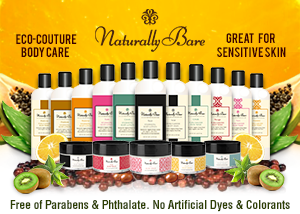Ingredient Intel: Borax

This is the third installment of our ongoing series aimed to help you better understand the ingredients—both desirable and undesirable—in your home cleaning and personal care products. We arm you with information and provide a solid assessment of each ingredient so you can make educated decisions for yourself and your family.
Ingredient: Borax
What it is: Borax is a natural mineral that is mined from dry lake beds in desert areas; it can also be produced synthetically. One of the most important boron compounds, it is typically formed of sodium borate, which is easily converted into boric acid. Chemical formula: Na2B4O7 • 10H2O.
How it Works: Borax is most commonly sold as a dry white powder that easily dissolves in water. It acts as a booster and enzyme stabilizer in multipurpose cleaners and detergents. It is also used as a poison for insects, fungus, and weeds, and is added to personal care products as a whitener and texturizer.
History: In the early 1880s, borax crystals were hauled out of the deserts of California and Nevada in large enough quantities to make it cheap and commonly available. Most of it was marketed under the trademark 20 Mule Team Borax, named for the way it was transported from lake bed to rail spur.
Where It’s Found:
- In soaps and other household cleaners.
- As a moth-preventative and flame retardant in carpets and upholstery.
- An active ingredient in roach killers and ant baits.
- Sometimes used as a water-softening agent.
- An ingredient of Play Doh, silly putty, and other pliable, goopy, or slimy toys.
- In nutritional supplements as a trace mineral, though no biological role has been found.
- In antibacterial products, particularly hand soaps and wipes.
- In tooth-whitening formulas.
- Commonly found in diaper creams.
- Used to as a food additive in some Asian countries, but banned for that use in the U.S.
What’s the Problem?
Exposure to borax can have both short and long-term health effects. Toddlers, young children, and pregnant women are especially at risk.
In the short-term, sufficient exposure to borax dust can cause respiratory and skin irritation. Ingestion may cause gastrointestinal distress including nausea, persistent vomiting, abdominal pain, and diarrhea. Effects on the vascular system and brain include headaches and lethargy. Severe poisonings cause a puffy red skin rash that can lead to unconsciousness, respiratory depression, and renal failure.
In the long term, chronic use has been shown to disrupt hormones, lowering sperm count in males and reducing ovulation and fertility in females. It also crosses the placenta during pregnancy where high doses affect fetal skeletal development and birth weight.
Greenwashing is another problem with borax. Because it’s found in the earth, borax is often pitched as “green” or “natural.” Those words don’t mean the product is safe. Nor do they mean it’s sustainable. When all the borox is mined out, it’s gone forever.
Doesn’t Government Protect Us?
Both the European Union and Canada restrict borax in body care products made for young children and require that all products containing the mineral be labeled as not appropriate for broken or damaged skin. In the EU, borax is listed as a Substance of Very High Concern (SVHC). Imported products containing the mineral are required to be labelled with the warnings “May damage fertility” and “May damage the unborn child.” No similar safety standards are in place in the United States.
In the U.S., 20 Mule Team Borax marketed as a multipurpose cleaner carries a simple cautionary label warning of short-term acute health effects, but nothing about long-term effects with chronic exposure. What’s more, when it comes to pesticides, manufacturers aren’t required to list ingredients they claim are “inert” or a “trade secret,” so you have no idea what’s in the pesticides you buy.
How Can You Avoid Borax?
Check ingredient labels. It may be listed by the following names:
- sodium tetraborate decahydrate
- sodium borate
- sodium tetraborate
- disodium tetraborate
Check out the Environmental Working Group’s Skin Deep database at EWG.org for borax-free personal care products and diaper creams. When shopping, look for certified green products with the Green Seal or EcoLogo mark on the label. When making your own household cleaners, if a recipe calls for borax, substitute baking soda instead.
A Caveat: It always pays to heed this caveat from EWG: “Whether you buy or make your own, remember: Other than plain soap and water, most cleaning supplies should be handled with caution, since many may be skin or eye irritants or produce caustic vapors.”



May 6th, 2014 at 5:25 pm
[…] New article in Green Cleaning Magazine […]